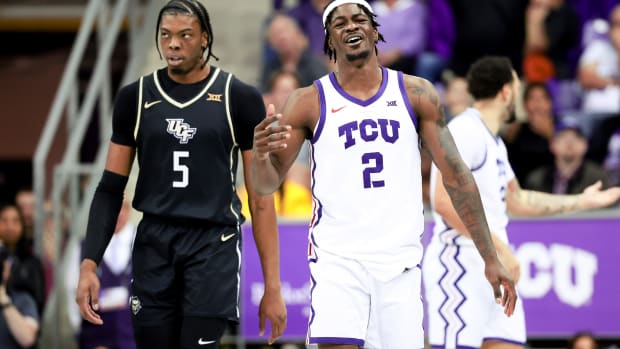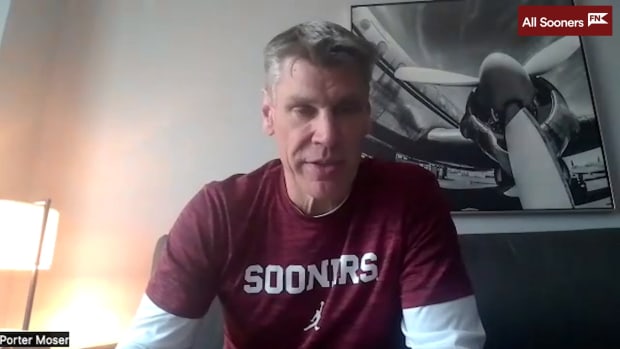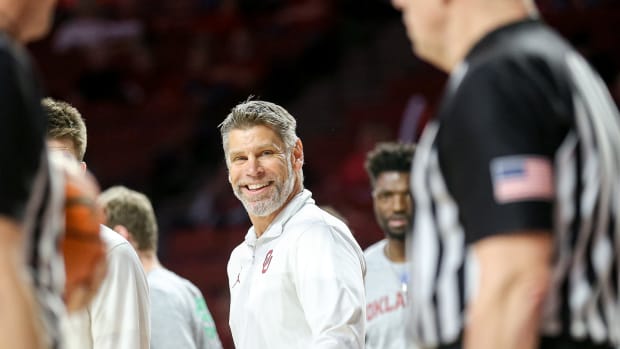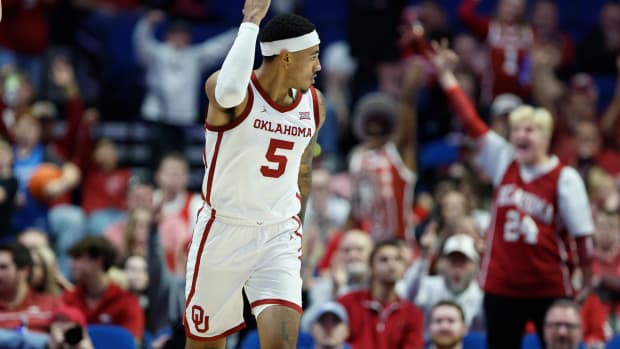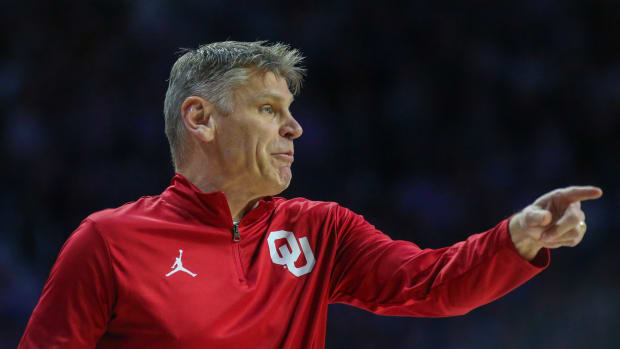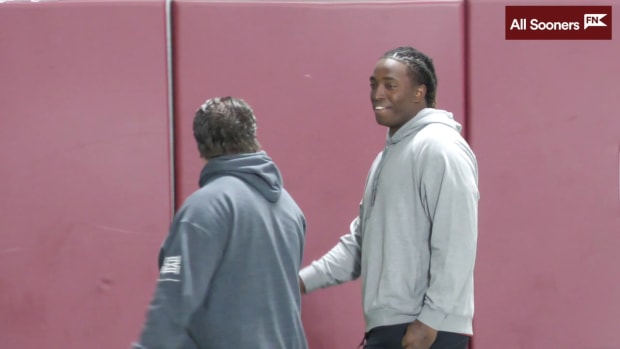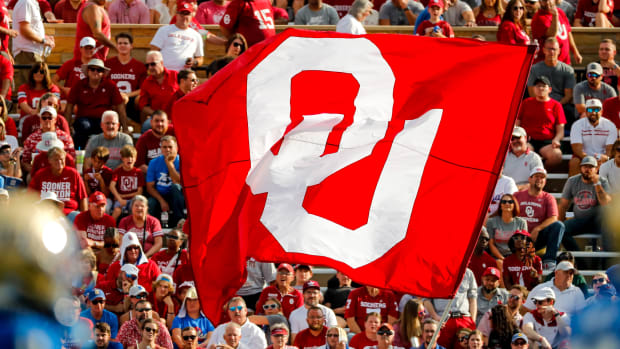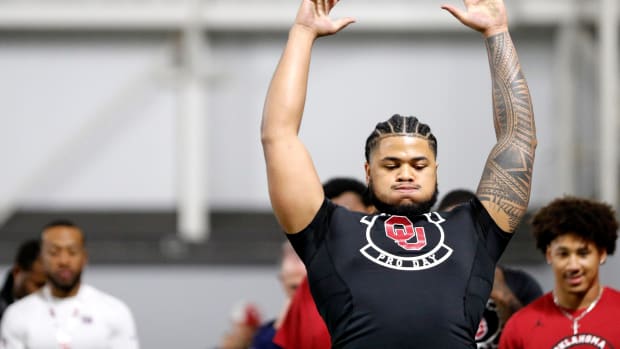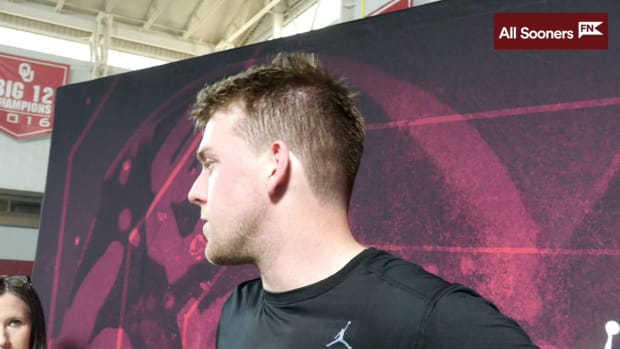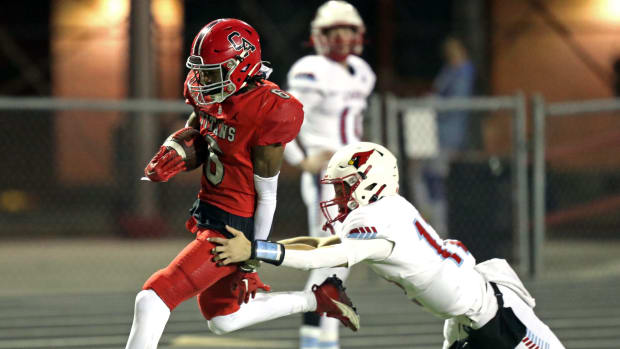Big 12 Commissioner says it's 'not unreasonable' to expect full stadiums in 2021
As the Big 12 Conference prepares to stage the men’s and women’s basketball tournaments in Kansas City this week, and as Big 12 spring sports (and some fall sports) are ramping up toward league play, commissioner Bob Bowlsby took a few minutes Monday to look back and marvel on the miracle that was the 2020 college football season.
“There isn’t anyway to put good face on it,” Bowlsby said during a 45-minute conference call with media. “ … If I could find out who to ask, I would ask for a refund on 2020. It was not a good year by any measuring stick.”
And yet, the Big 12 Conference got through the fall football season with minimal disruption. Non-conference play was two-thirds erased and haphazardly executed, but only a handful of conference games had to be canceled (including Oklahoma’s game at West Virginia).
"It was a hundred little decisions that went into getting us to the first of September."
But Bowlsby expressed an appreciation for amount of games league members did get — and to everyone involved for making it happen. Patience, he said, was “a significant virtue” to pulling off a successful season.
“Indeed, it was mid-August before our board said, ‘You know, we think we can do this safely and we think we ought to try,’ ” Bowlsby said. “And so forward we went. And each of the leagues, we spent a lot of time talking to one another and trying to put in place — it was a hundred little decisions that went into getting us to the first of September.
“But the advice we got that was the best, and we’ve stuck to it ever since, and that is put one foot in front of the other, take small steps, make small adjustments, listen to doctors and scientists and base your decisions on that, and truly wait as long as you possibly can to make decisions. Because if you try and put a plan in place two months ahead of time, you’re unquestionably going to get frustrated. Because the world was changing too rapidly to make that a reasonable way to approach it.
“Had we gotten three wheels off the rails and gotten on the verge of crashing, I can tell you we would have stopped and we would have listened to our doctors. But they never advised us that that’s where we were, and as a result, we were able to keep moving forward. Sometimes we moved forward quickly and sometimes it was really slow.”
Bowlsby said the conference and its membership “are in good shape” financially because the Big 12 will be “able to capture the majority of the revenue from the College Football Playoff,” but said individual members will “fall short” of meeting their bottom line because of the massive depletion — by 75 percent or so — of ticket buyers. The reduction in stadium capacities.
“It’s going to be a matter of years before the institutions have fully recovered,” Bowlsby said, “and before we will be certain that we are back to business as usual relative to revenue distribution.”
In May, the league distributed $37.7 million per school, which was down — but only down $1.1 million from fiscal year 2019. That was a result of the cancellation of the conference tournaments and March Madness.
Projecting forward, schools will suffer from a lack of attendance, but they’ll be made reasonably whole from the league’s arrangements with television networks.
Times are such now that schools can begin planning on full stadiums. Alabama last week announced intentions to have maximum capacity crowds, and Oklahoma joined them at last week’s Board of Regents meeting in Oklahoma City.
“As we look to the future," OU athletic director Joe Castiglione wrote last week, "our plan for the 2021 football season is to return to maximum capacity at Gaylord Family – Oklahoma Memorial Stadium.”
"It’s not unreasonable to see a fall that could have the reduced attendance restrictions lifted.”
Bowlsby certainly seems hopeful that can happen.
“If we continue to make the kind of progress that we’re making right now on testing and on vaccinations, I think it’s not unreasonable to see a fall that could have the reduced attendance restrictions lifted,” Bowlsby said. “I think Dr. (Anthony) Fauci said that, and I think others have said that that’s not an unreasonable expectation.
“It’s going to be a matter of what happens between now and then. If we backslide or the variants turn out to be more difficult than they have been so far, who knows? I don’t think there is any metric to forecast that. But based upon some of the scientific leadership around the country, there seems to be some possibility that could be the case.”
And although there will be challenges, Bowlsby said, having full stadiums is huge.
“Our schools are hurting,” he said, “and their revenue — despite the revenue from the conference — is significantly reduced.”
Another factor then comes into play, Bowlsby said, and he called it the “psychology of public assembly” that is currently evolving.
"Public confidence is going to have to be rebuilt."
“I believe people will come back because the environment is fun,” he said. “People like to come back to their campuses. They identify with their schools. I think they identify with their teams, their players and their coaches. So I think they will come back.
“Having said that, however, I think public confidence is going to have to be rebuilt. I think when everyone is vaccinated at a level that the CDC says we have the necessary herd immunity, when we get to be a little more regular in how we’re dealing with it … For me one of the measures we’re back to some semblance of normal is when we don’t have to do testing in the sports environment. Will we be there this fall? It’s hard to tell right now. I don’t think anybody is thinking six to eight months ahead of time right now. We’re on a shorter time frame than that.
“I think people are going to have to ask themselves if they want to sit cheek by jowl with people that they don’t know, and maybe with people that don’t mask, and maybe you don’t know if they’ve been vaccinated or not. And so I think it will evolve … but it could take a while for that to happen.”
It’s also worth remembering that the Big 12, in large measure, may have saved college athletics in 2020.
Last August, the SEC said it was playing football. But the Big Ten and the Pac-12 both said they were cancelling their seasons. It was then reported that the ACC intended to wait to see what the Big 12’s decision was before it either moved forward or pulled the plug.
When the Big 12 announced it was playing, the ACC jumped on the bandwagon, tilting the Power 5 sentiment away from mass cancellations. Soon enough, the Big Ten and the Pac-12 began formulating plans to play, and other conferences joined in as well.
What might it all have looked like if the Big 12 had tucked tail and followed the Big Ten and Pac-12’s lead? Looking back in hindsight, what ramifications might have followed with no college football in 2020?
"We got back to playing as quickly as we could. I don’t think we took inappropriate risks."
“It’s hard to forecast that,” Bowlsby said. “But our financial problems would have been vastly worse. We would have had a lot of kids that were struggling with mental health — and they still are — but most of them, their lives are centered around their pursuit of excellence in their sport, and so continuing to compete in their sports gives them some semblance of normalcy. And I think there’s therapy in that. So financially, it would have been much worse. Personal-health wise it would have been much worse.
“And it would have certainly caused us a whole other set of implications — eligibility implications and the like.
“It has not been easy. There have been a lot of moving parts. We have relied on the best advice of doctors and scientists and epidemiologists and immunologists. There’s no other way to describe all of it than it was a very difficult slog. It was difficult for students and athletes and coaches and support staff members. … We got back to playing as quickly as we could. I don’t think we took inappropriate risks. We certainly didn’t depart ever from what we were advised by our medial teams. I’m glad to be here. I think we had extremely high level quality in our product this year.”
